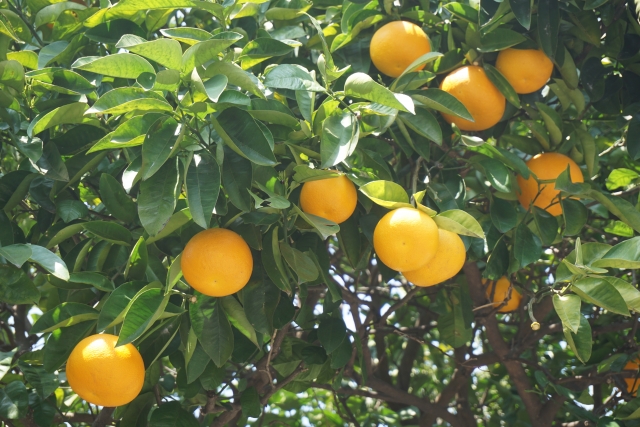
Oranges are sweet and delicious, but varieties like Amanatsu and Banpeiyu, which have a flavor closer to grapefruit with a bit more tartness, are also very tasty.
Compared to oranges, these varieties last longer and are more affordable, making it easier to enjoy them in large quantities. However, they have a lot of seeds.
This naturally leads to the idea of trying to grow them from seeds, which I’m sure you understand by now.
Amanatsu and Banpeiyu require a bit more effort, but they can be grown from seeds.
In this guide, I’ll introduce an easy method for germinating and growing oranges from seeds.
How to sprout from the seed of grapes after tasted

Collecting seeds from oranges (Amanatsu, Banpeiyu, grapefruit)
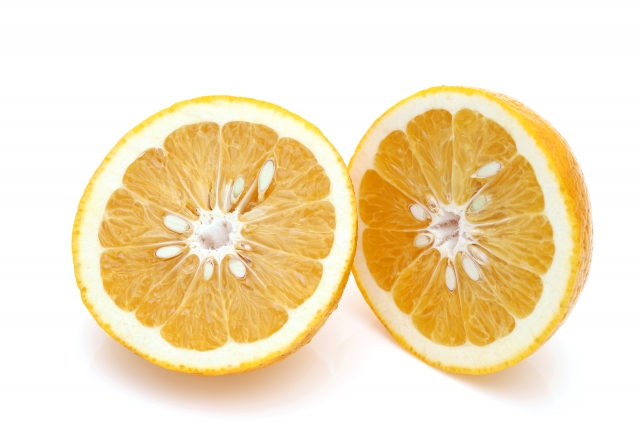
First, collect seeds from citrus fruits such as oranges, Amanatsu, and Banpeiyu.
Compared to Satsuma oranges (Unshu mikan), Amanatsu and Banpeiyu have more seeds, making them easier to collect.
The germination rate of orange seeds is quite good, so even a single fruit’s worth of seeds can result in many seedlings.
In my experience, the germination rate is around 60-70%.
Peel the thin skin off the orange seeds
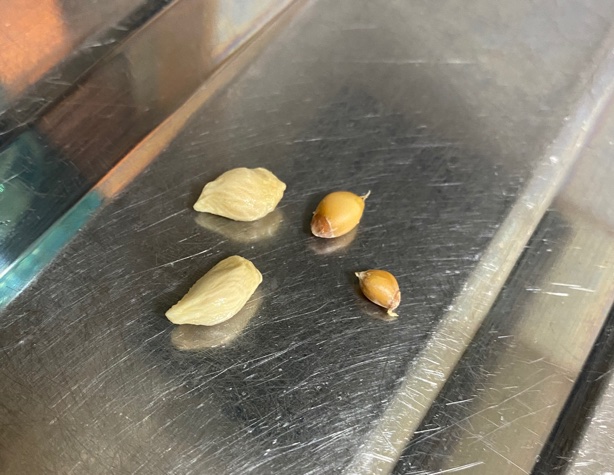
Next, peel the thin skin off the collected orange seeds.
In the image above, the seeds on the left side still have their thin skin, while the seeds on the right side have been peeled.
Orange seeds are slippery due to a substance called pectin.
Unfortunately, pectin contains substances that inhibit germination, making it an unnecessary component when growing oranges from seeds.
To remove pectin, you can:
- Soak the seeds in water for 1-2 days and then rinse them off
- Peel off the thin skin of the seeds
From my experience, leaving the thin skin on not only retains pectin but also extends the time it takes for the seeds to germinate.
You don’t necessarily need to soak and rinse the seeds; you can peel the thin skin off from the beginning to promote germination.
So, peel the thin skin off the collected seeds to enhance their germination.
Moisten a paper towel and spread the orange seeds on it
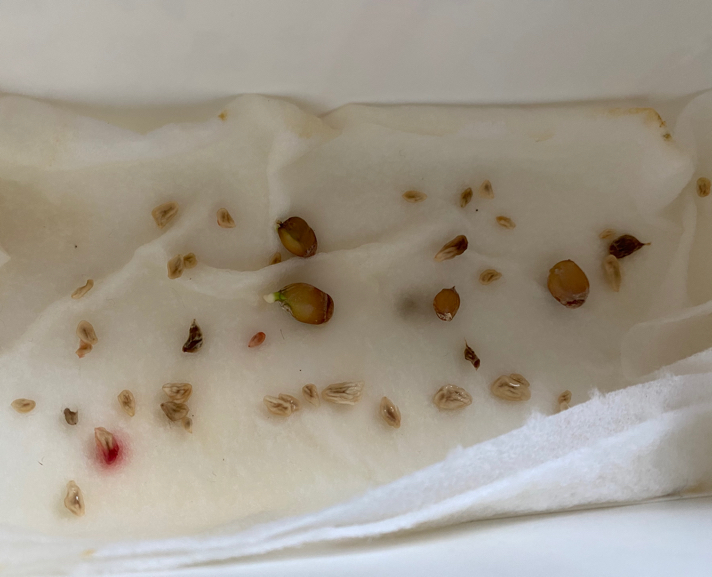
From here, proceed as with the previously mentioned tomato and kiwi seed methods: spread the peeled seeds on a water-moistened paper towel.
In the image above, the seeds are from a pink grapefruit. However, since most of the seeds were incomplete, I planted them with their skins intact.
Only three seeds were viable, but after peeling them, they began to sprout within two days.
The quick germination of the pink grapefruit seeds was likely due to their high ripeness.
Based on past experiences, even when peeled and placed on a damp paper towel, citrus seeds typically take about 1-3 weeks to germinate.
The germination rate for citrus seeds is around 60%, but they don’t all sprout simultaneously. Some seeds sprout quickly, while others take their time.
Be patient, as there can be considerable variation in germination times.
The Growth Progression of Mandarin Seedlings
The Mandarin seedlings, ranging from those that have germinated about two months ago to those that have just sprouted, show a variety of growth stages.
I’ll summarize their progress, as it’s always exciting to see how they develop along the way. Give it a try; watching the germination process can be quite thrilling!
The mandarin seedlings right after germination
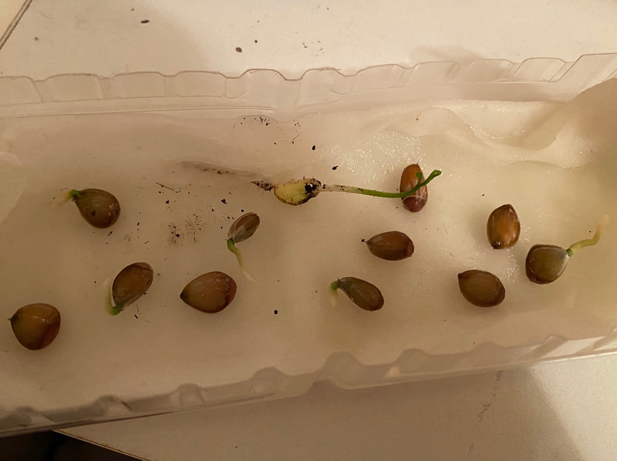
Here’s the mandarin seeds right after germination.
The roots are starting to sprout, aren’t they?
There’s one that seems a bit longer, probably around two weeks old?
Compared to vegetable seeds, fruit tree seedlings tend to grow slowly, so you can continue to grow them on the kitchen paper for a while.
One advantage of germinating seeds on kitchen paper is that you can easily monitor their progress.
One month after mandarin germination – first true leaves have emerged
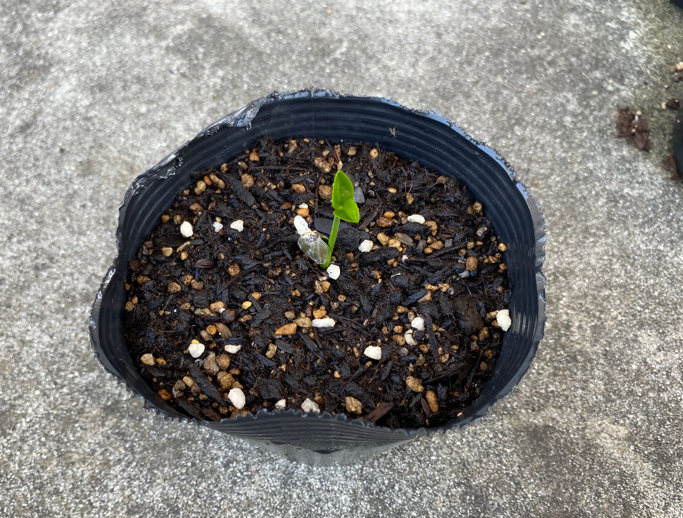
Here is the mandarin seedling after about one month of germination.
Initially, it may take some time for the shell covering the seedling to come off, and during this period, only the roots tend to grow. However, gradually over time, it will start to develop cotyledons.
The roots grow straight down, so by this stage, they should have extended enough to reach the bottom of the seedling pot.
After 2 months since germination, the mandarin seedling is growing vigorously
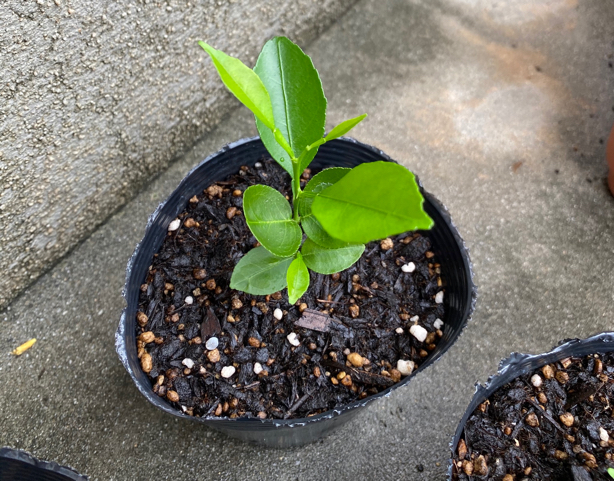
This mandarin seedling, about two months after germination, has grown significantly more leaves. At this stage, you start to realize it’s not just a plant but indeed a small tree.
While I’m curious about the root system’s progress, I’ll refrain from disturbing it as it’s the most advanced seedling.
By the way, I’m nurturing it in a pot because eventually, I plan to plant it in the garden.
After germination, mandarin seedlings rapidly develop their roots, making it challenging to untangle them when transplanting into pots or directly into the ground.
Therefore, it’s better to keep them in pots until they reach a certain size.
The caterpillars of swallowtail butterflies are devouring the leaves of the mandarin tree
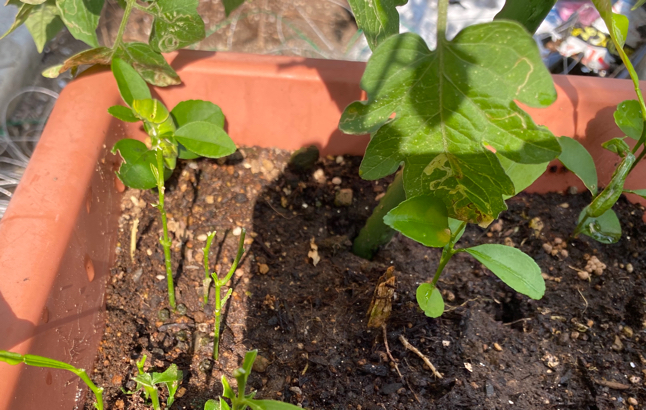
There were some mandarin seeds scattered around, and unnoticed, some of them had germinated. Before I knew it, some had lost their leaves and were left with just stems.
In the foreground of the photo, you can see one of these stems.
And if you look closely, you’ll spot the culprit in the top left of the photo.
Caterpillars of swallowtail butterflies had been munching away, leaving a mess behind.
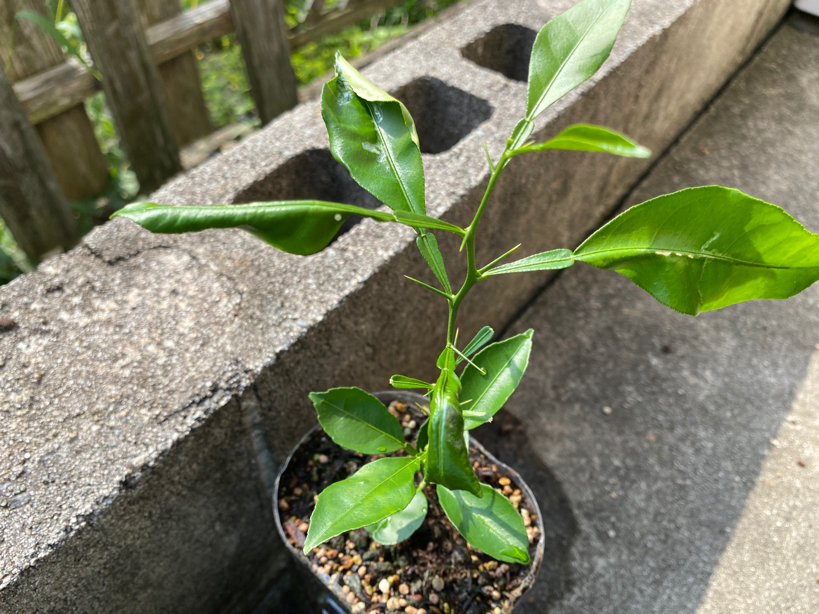
Here are some eggs of the swallowtail butterfly.
You can see one round egg attached to a leaf.
While I hold no grudge against swallowtail butterflies, there simply aren’t enough leaves to accommodate their voracious appetites, so this year, they were kindly asked to retreat.
Indeed, swallowtail caterpillars have insatiable appetites and will indiscriminately devour any available foliage. Young seedlings, with their tender leaves, are particularly irresistible to them.
Oranges (Mikan, Mikan, Grapefruit) can be grown from seeds
This time, I introduced a method for growing oranges (Mikan, Mikan, Grapefruit) from seeds.
Oranges are said to take 4-5 years to bear fruit, but this applies to those that have grown to a relatively large size, such as those available for purchase at garden centers, which are typically propagated from cuttings.
There are also seedlings grown from orange seeds that have been in cultivation for 4-5 years, but due to factors like being continuously eaten by caterpillars, they have not grown significantly.
It’s been understood that patience is necessary when growing oranges from seeds, but it also allows for the opportunity to observe the growth process carefully.
If you’re interested, please give it a try.
【Easy for Beginners】How to Grow Kiwi from Seeds

How to sprout from the seed of grapes after tasted

How to sprout from strawberry seeds



コメント